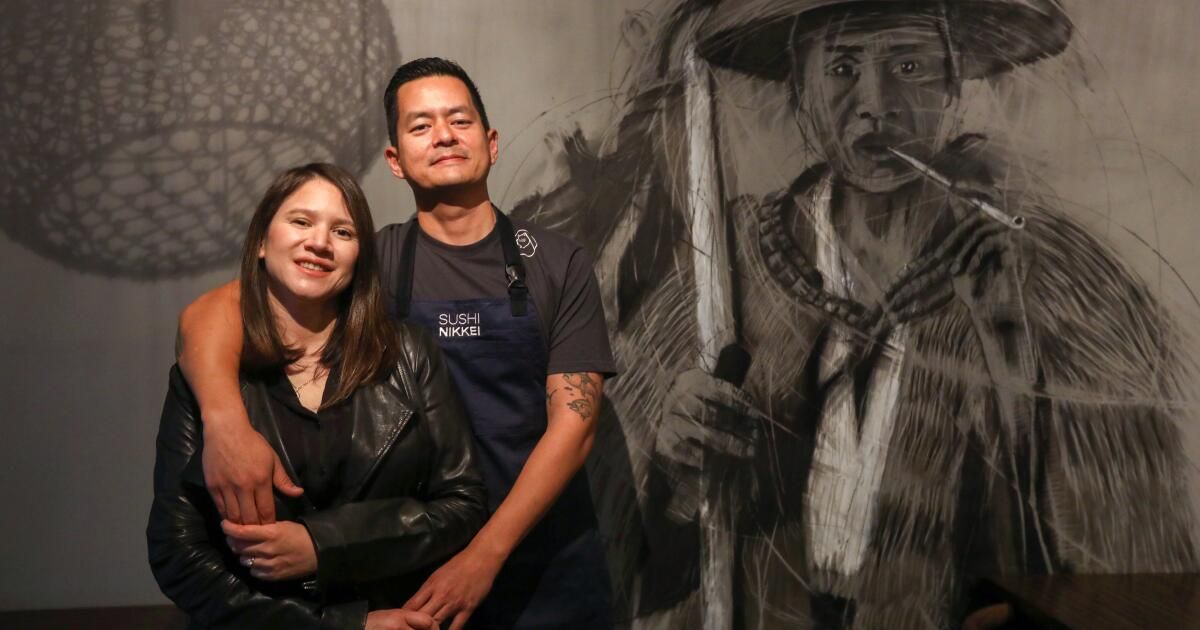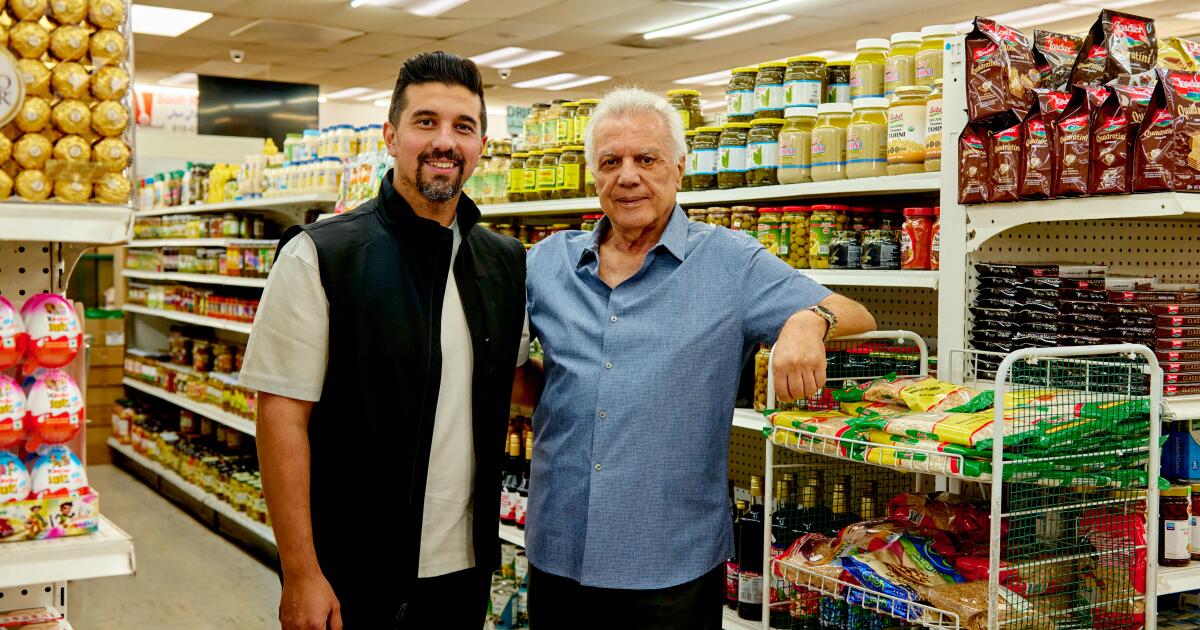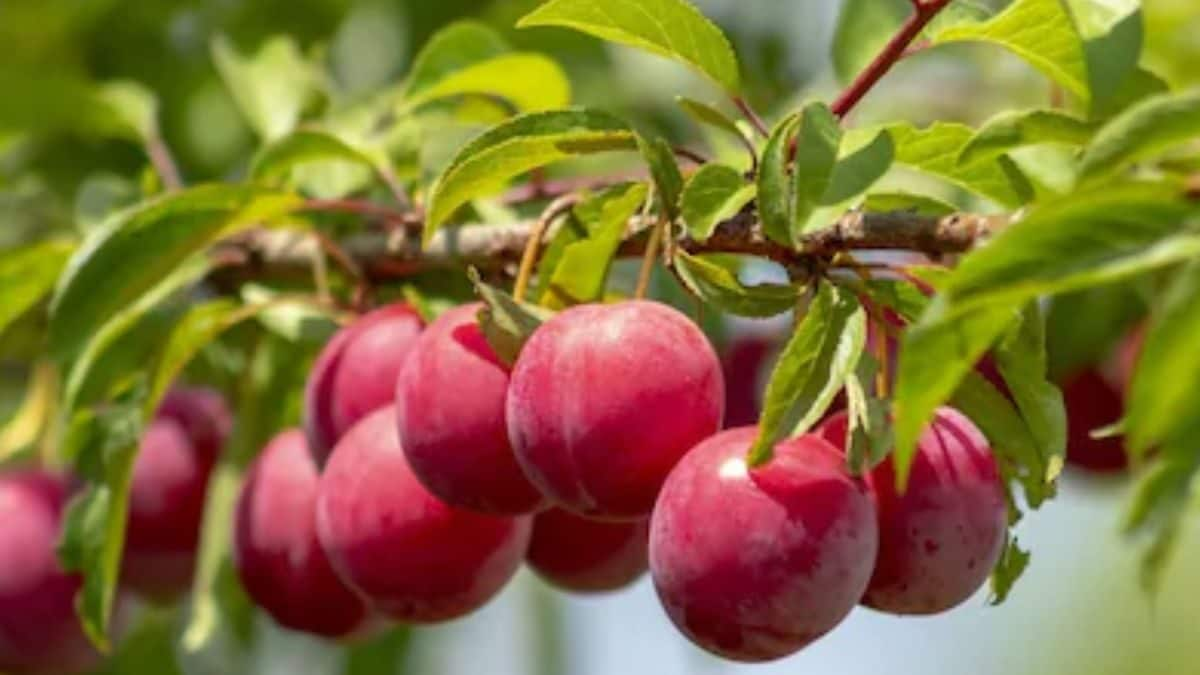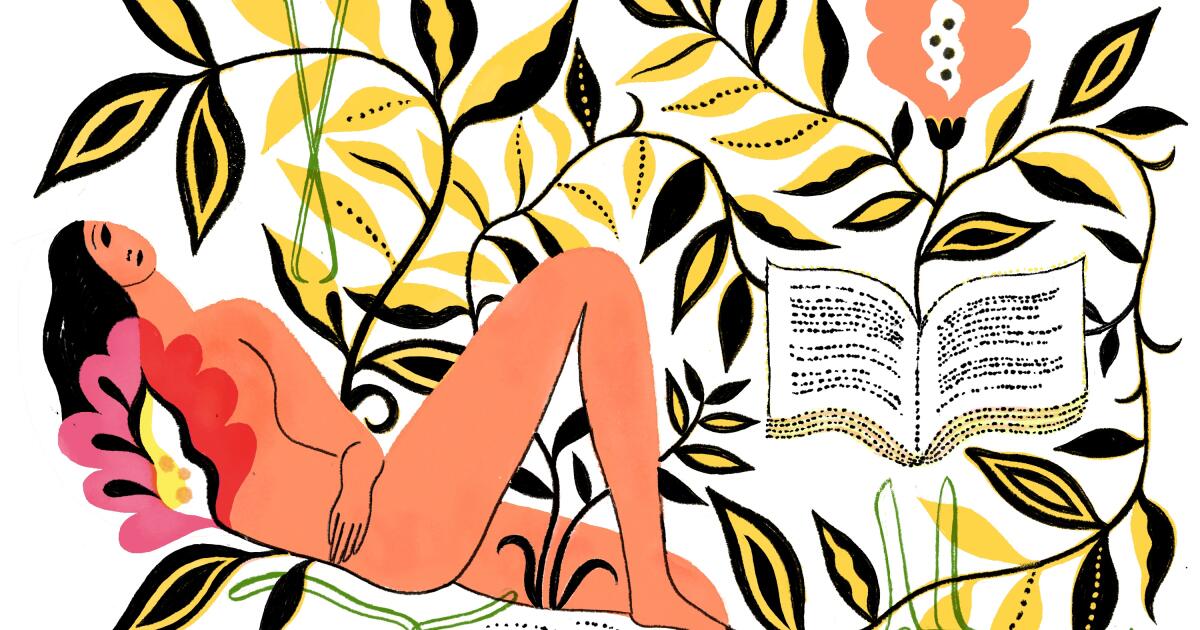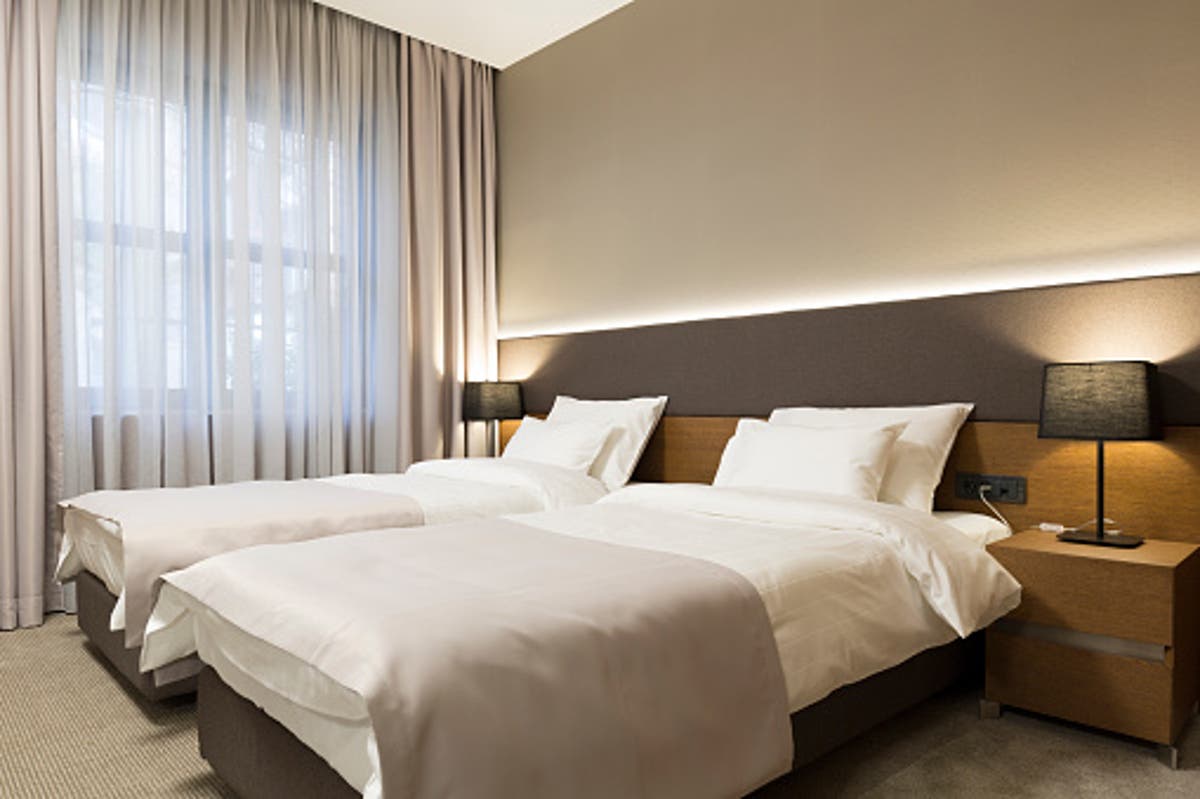On a recent Sunday night in Long Beach's Bixby Knolls neighborhood, chef Eduardo Chang and his wife and business partner, Daiwa Wong, greeted Sushi Nikkei guests as they filed through the busy dining room to celebrate the restaurant's second anniversary.
Chang and Wong specialize in Peruvian-style sushi, which includes several types of tiradito, such as yellow tail with jalapeño and ponzu sauce or the catch of the day with leche de tigre, ají Amarillo, campo (roasted corn), and sweet potato. But that night the couple served a special menu of traditional Peruvian dishes not normally found at Sushi Nikkei.
“You have to try it,” Chang told a table of three, touting the seca norteño, braised short ribs simmered in cilantro sauce. “He's only here for tonight. “We wanted to pamper our guests.”
And there were many guests to pamper.
Every table in the 50-seat restaurant was full and more guests were milling around the door. Some were regular customers, and Wong embraced them with the familiarity of an old friend.
“When you walk in,” said Samantha Rollins, a Lakewood resident who has been a customer since the restaurant opened, it is “like they welcome you into their home. Everything here is made with love, made with meaning.”
An acebichado dish with crispy shrimp, avocado topped with tuna, acebichado sauce, togarashi and green onion at Sushi Nikkei in Long Beach.
(Genaro Molina / Los Angeles Times)
The connection between Peru and Japan goes back generations, creating a unique thread in Peruvian life known as Nikkei culture. In two years, Chang and Wong have quietly built a following in Long Beach for their cozy eatery that serves a sushi-focused version of Nikkei cuisine.
Peru established diplomatic relations with Japan in the late 19th century, and Japanese immigrants came to Peru when the industrial revolution made agriculture in Japan challenging. The migration began a long tradition of using Peruvian ingredients with Japanese culinary techniques.
Chang said he initially wanted to simply call the restaurant Nikkei, derived from the Japanese word Nikkeijin, which refers to Japanese emigrants to Japan as well as their descendants. But the restaurant's proper name is Sushi Nikkei – Peruvian Style.
“People here don't know much about it,” Chang said. “People here would read it and not know what Nikkei is. “So we added sushi, because they’ll recognize it.”
Chang and Wong opened their restaurant to share the Japanese-Peruvian cuisine that Chang's mother and grandmother cooked for him when he was a child. Along the way, the couple have become silent ambassadors, sharing cultural history with diners, one sushi roll at a time.
“They see 'Peruvian style' and think lomo saltado,” Wong said. “The challenge is [raise] knowledge of Nikkei cuisine.”
One of Sushi Nikkei's signature dishes is the parmesan scallop. The sweet scallop is brushed with lemon butter and topped with a perfectly formed nugget of rice, then topped with Parmesan cheese that is toasted with a blowtorch before serving. Parmesan and sushi may seem like an unexpected combination, but the smooth, rich bite is a close cousin to conchitas a la parmesan, a popular Peruvian dish of seared scallops with gratin parmesan.
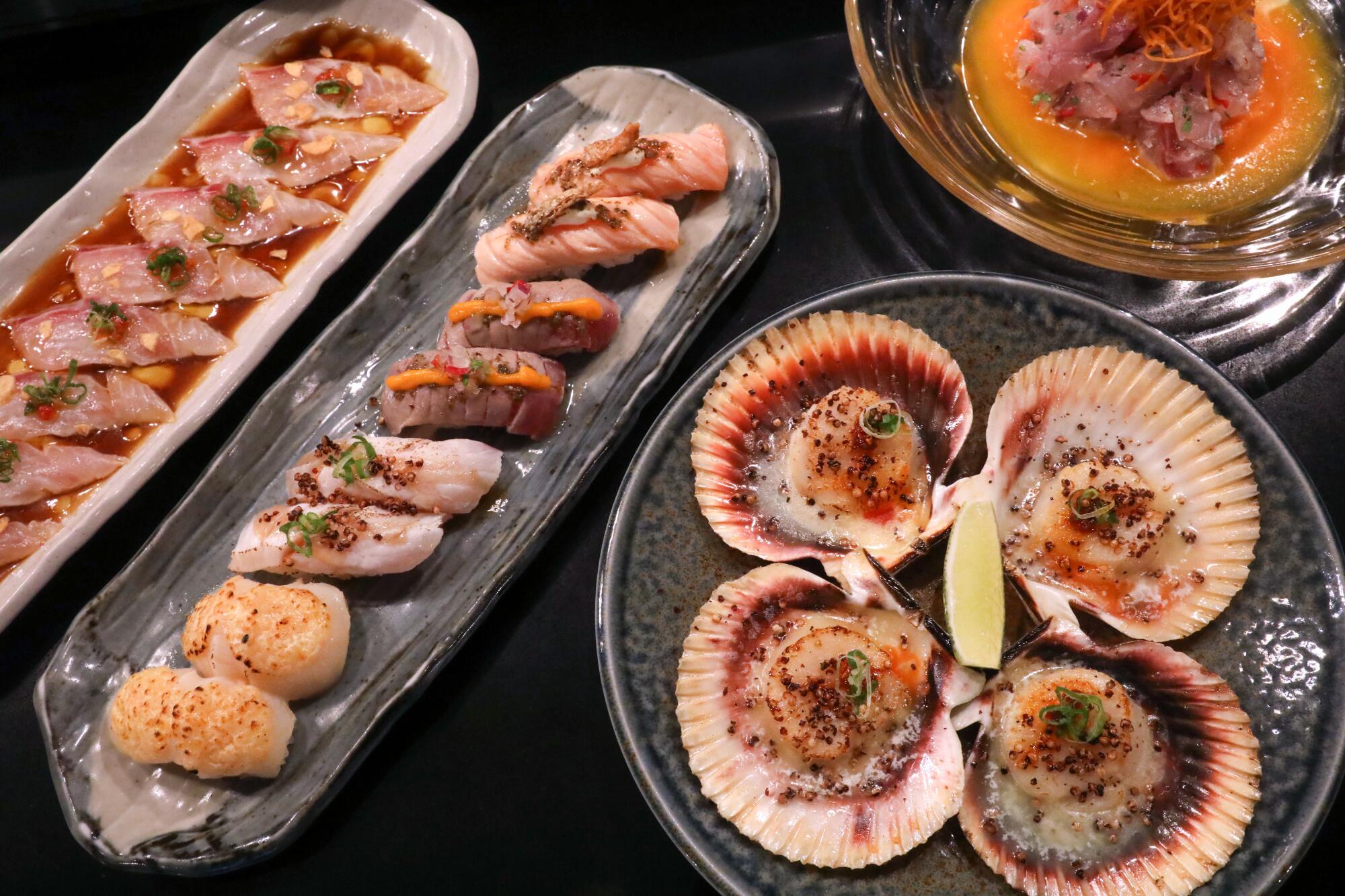
Nikkei tiradito, left, Nikkei sushi tasting, grilled scallops on the half shell and Peruvian ceviche, top right.
(Genaro Molina / Los Angeles Times)
It is an unexpected Nikkei dish that in some ways reflects the notion that Nikkei cuisine, at its core, revolves around constant movement and fusion.
“Nikkei food is not intended to describe just Japanese-Peruvian food,” says Jane Matsumoto, executive director of culinary arts at the Japanese American Community and Cultural Center in Los Angeles. “Nikkei food can be Japanese-American or Japanese-Mexican. Peruvian Nikkei is just one example of the many ways in which Japanese ingredients, Japanese techniques, Japanese foods and styles have been integrated into another culture.”
When groups recreate the food of their homeland in a new region, substitutions are made, flavors are replicated as best as possible, and over time, that new flavor becomes tradition.
The Japanese influence in Hawaii gave rise to dishes like Spam musubi, Matsumoto notes. There are even cases of fusion within the Asian diaspora in Latin America that can be traced to slightly more familiar Peruvian dishes, such as lomo saltado. The 19th century brought Cantonese indentured workers to Peru and stir-frying meat and potatoes is a staple of Chifa cuisine, a culinary tradition that combines Chinese and Peruvian culture.
Wong and Chang have their own family ties to Chinese culture. The couple met in high school, at Colegio Peruano Chino Juan XXIII, a bilingual Catholic school in San Miguel, Peru. Wong's mother, a teacher, and her father, a merchant, sent her and her brother to school with the help of a scholarship, while Chang's single mother worked as an accountant to support the family. two of her children.
“My husband and I were high school friends. We went to prom together, but as friends,” Wong said.
The two continued their friendship after graduating, but Wong left for the United States in search of better opportunities and Chang attended Peru's Cordontec culinary school. Wong gave birth to her first child and became a registered nurse, while Chang became an itamae sushi chef and eventually opened her first restaurant, Yume, in Lima.

Chef Eduardo Chang prepares Nikkei Sushi Tasting at Sushi Nikkei.
(Genaro Molina / Los Angeles Times)
Chang came to the United States to visit and their friendship eventually turned into a romance. They married in 2018. By then, Chang and his partners had opened a second restaurant in Peru, but in 2019 he came to the United States permanently to be with his wife.
“He already opened his successful restaurant, but because of me he decided to leave everything behind and start again,” Wong said.
The couple had their first child together and although they were happy, Wong said she felt guilty because Chang left Yume. In Peru, he was an accomplished chef and restaurateur, but in California he rose early each morning to prepare sushi for a local supermarket chain.
“Our plan was to open our own restaurant,” Wong said, “I always told him, 'I know we can do it. I trust in your hands.'”
They worked hard and saved money for three years to get a space: a former Mexican restaurant on Atlantic Avenue in Bixby Knolls.
“It was very different,” Wong said. “We remodel every corner.”
They swapped out the party orange and yellow for a muted black and navy color scheme. The remodel also included the addition of a mural, drawn in a black-and-white criss-cross style, of a Japanese farmer, which now dominates Sushi Nikkei's dining room. The artwork, by Peruvian artist Rudolph Castro, is a stunning reminder of the history of cooking, a silent guardian of tradition.
Sushi Nikkei opened in January 2022 and in August it was in the Michelin Guide as a “point of view” restaurant.
“Since we opened, we have had people. Every weekend it was packed,” Wong said. A second Sushi Nikkei location followed in Belmont Shore in December of the same year.

Peruvian ceviche with striped bass, leche de tigre, yellow chili, canta and sweet potato at Sushi Nikkei.
(Genaro Molina / Los Angeles Times)
At both locations, the scallop parmesan can be ordered alone or as part of a tasting menu that includes three other types of sushi representative of Sushi Nikkei: Sweet Salmon, Tuna Power and Asian Shiromi. In addition to parmesan, quinoa, cream cheese and yellow chili pepper are among the ingredients that Chang incorporates into the Sushi Nikkei tasting.
“There are a lot of people who don't like cream cheese in sushi, but with tuna and salmon it's a good combination,” Chang said.
Cheeses, Matsumoto says, were incorporated into Japanese food with the introduction of Western and European cultures. The evolution of its use continues today.
“Modern Japanese are adding cheese to Japanese croquettes,” says Matsumoto. “I recently heard that someone put cheese in okonomiyaki.”
For tiradito, another distinctly Japanese Peruvian tradition, raw fish is sliced like sashimi but seasoned with ingredients like chili and lime instead of wasabi and shoyu.
Early Japanese immigrants also introduced Peru to the idea of eating a greater variety of seafood, including octopus and squid. One Sushi Nikkei menu item, Octopus Fire, is the culmination of both stories, presented as a row of thinly sliced octopus with citrus, barbecue sauce and a Peruvian sauce called chalaquita.
“Chalaquita is like Mexican pico de gallo,” Chang said.
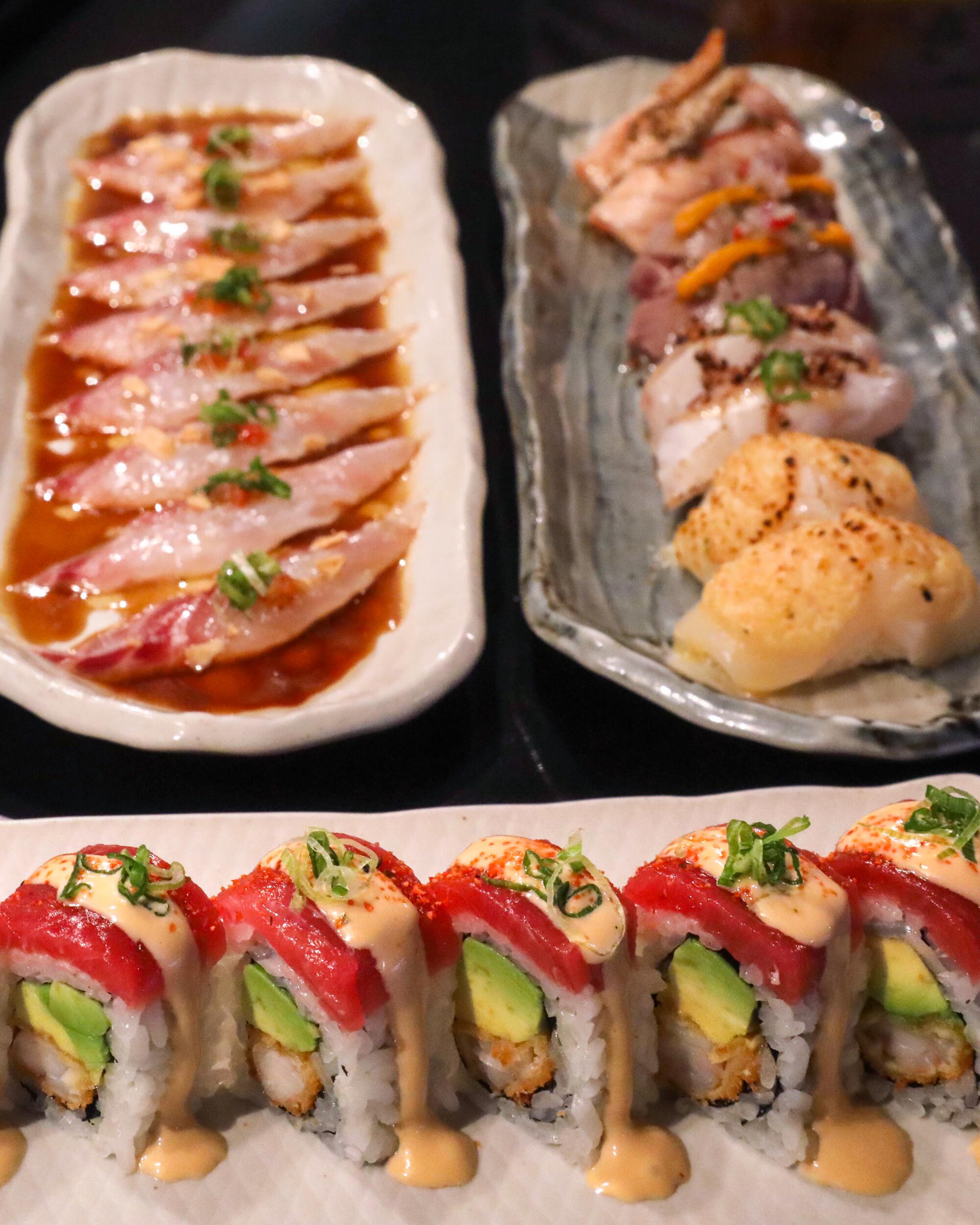
A plate of acebichado with crispy shrimp, along with the Tiradito Nikkei plates, left, and the Nikkei Sushi Tasting Plate.
(Genaro Molina / Los Angeles Times)
However, the Dusty roll (crispy shrimp and avocado, topped with octopus and finished with Parmesan cheese and spicy orange sauce) does not carry any Peruvian or Japanese name. It was inspired by the cartoon character the couple's young son is obsessed with: the orange plane named Dusty in the 2013 Disney animated film, “Planes.” It's her way of incorporating his own history into her Nikkei style of cooking.
In 2023, the family became five people and welcomed a girl. Wong still works as a nurse during the day and manages the Bixby Knolls restaurant at night. Chang takes care of the Belmont Shore location while Wong's mother helps with her children. However, on the night of the special anniversary menu they worked together at Bixby Knolls. Wong walked through the dining room as usual, while Chang stood at the pass reading tickets and sending food to the tables.
In the two years since the couple began their restaurant journey, they believe they have helped pioneer Nikkei cuisine in Southern California, a generation after Nobuyuki “Nobu” Matsuhisa popularized Peruvian sushi in the U.S. , first at Matsuhisa in Beverly Hills and then at his Nobu restaurant chain.
Chang and Wong said they are proud to present their heritage to a community that is excited to appreciate it, helping diners like Rollins get their first experience with Japanese-Peruvian culture.
“Coming here, you learn a lot through the food of a culture,” Rollins said.
The work of sharing Nikkei culture is ongoing because it is an identity, like any other, that is always evolving.
In the weeks following the anniversary, guests call hoping to order dry northern, hungry for the tender meat and the rice and beans served alongside it. Wong regretfully informs them that it was just a special, but hopes they will have more special menus (and many more anniversaries) in the future.
“How many more years do we want to be here?” Wong said. “We want to be here forever.”

